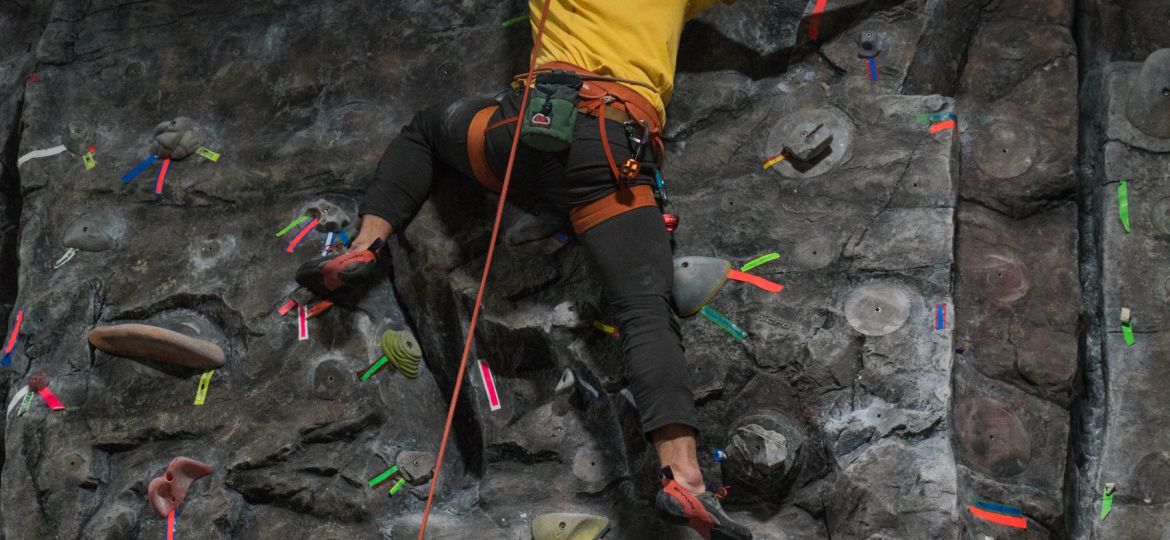
The culture of rock climbing at St. Olaf
Tucked at the bottom of Skoglund’s west stairwell is St. Olaf’s climbing wall. At 55 feet, the wall’s peak is one of the highest in Rice County, and for fearful students like myself, it might as well be El Capitan’s Dawn Wall.
Suffused with brightly-colored holds, the wall’s surface fits nicely amidst the overwhelmingly gray tinge of the Tostrud Fieldhouse. Whether it is being swarmed with climbers or empty, basking in the nighttime streetlight of Skoglund’s parking lot, the structure possesses an undeniable gravitas that never fails to hold my attention, even if just for a moment.
The wall is home to a community of Oles who spend hours of their day harnessed high above ground, studying the wall’s many details, connected in their goal of reaching its top, and reaching it quickly. This community and their earthy aesthetic intrigues me on a daily basis, so I decided to take a deeper look into what the hobby is all about.
Made up of many class years, experience levels and a range of Fjallraven backpacks, this group is a welcoming one. While the rock wall serves as a fun place for students on campus to go to after class or on the weekends, it is also taken seriously by those who aspire to climb outdoors. The five-story wall and its neighboring bouldering structure serve as a traditional climbing gym for the group’s more experienced members and a place to practice routes they would encounter on climbs in different regions of the Midwest. Veteran members act as route setters, orienting the wall’s holds to create paths of calculated difficulty, graded with numbers and letters on a scale beyond my comprehension.
Without being able to practice indoors, many of these climbers would lose their edge in the winter months, where consistent outdoor climbing is made impossible by both the weather and geographic location of Northfield. Many members of this community also frequent Carleton’s climbing setup, which lacks the height of St. Olaf’s but includes a rigorous bouldering wall different from the one found in the Fieldhouse.
While the wall can be seen as a training ground for outdoor climbing, it still provides its own set of challenges, described as addicting by the majority of its loyal fans. When I asked frequent climber Jacob Tollerud ’21 what the feeling is that keeps bringing him back, he brought up the idea of flow state.
Flow state comes when you are completely immersed in an experience, devoting so much of your physical and mental energy to the task that the rest of the world disappears around it.
“This is a great place to adapt your skills for the real climbs,” Tollerud said. “But training the more difficult routes trying to not fall is where you get the most dopamine, where you get the biggest rush.”
“You get to the top and you’re just enthused,” he said. “You’ll get down five minutes later, and it’s like a drug, thinking about what the next thing there is to do. It’s the flow state.”
From the wall’s loyal climbers to the gym rats of the first floor weight room, to the runners of the upper track and the gatekeepers of the water fountain matts, the Tostrud Fieldhouse serves as a haven for different flow states students enjoy.
As many of us are consumed by the grandeur of professional sports along with the fame and attention they demand, the smaller joys of physical activity are often overlooked. The rock wall and its thriving community are a nice reminder of these joys, and the equally fulfilling passions that exist for physical activity outside of conventional athletic teams.

